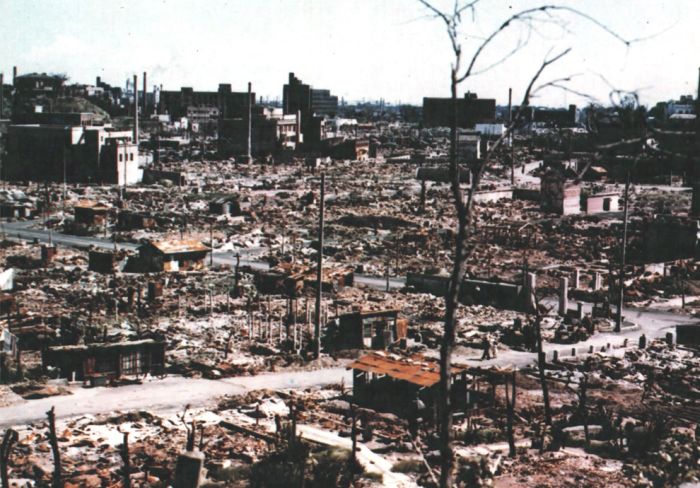|
|
History: Atomic Bombing Of Hiroshima, Japan
|
To the north of Nagasaki there was a camp holding British Commonwealth prisoners of war, some of whom were working in the coal mines and only found out about the bombing when they came to the surface.
• The bombing
On the morning of August 9, 1945, the U.S. B-29 Superfortress Bockscar, flown by the crew of 393rd Squadron commander Major Charles W. Sweeney, carried the nuclear bomb code-named "Fat Man", with Kokura as the primary target and Nagasaki the secondary target. The mission plan for the second attack was nearly identical to that of the Hiroshima mission, with two B-29s flying an hour ahead as weather scouts and two additional B-29s in Sweeney's flight for instrumentation and photographic support of the mission. Sweeney took off with his weapon already armed but with the electrical safety plugs still engaged.
Observers aboard the weather planes reported both targets clear. When Sweeney's aircraft arrived at the assembly point for his flight off the coast of Japan, the third plane, Big Stink, flown by the group's Operations Officer, Lt. Col. James I. Hopkins, Jr. failed to make the rendezvous. Bockscar and the instrumentation plane circled for 40 minutes without locating Hopkins. Already 30 minutes behind schedule, Sweeney decided to fly on without Hopkins.
|
|









